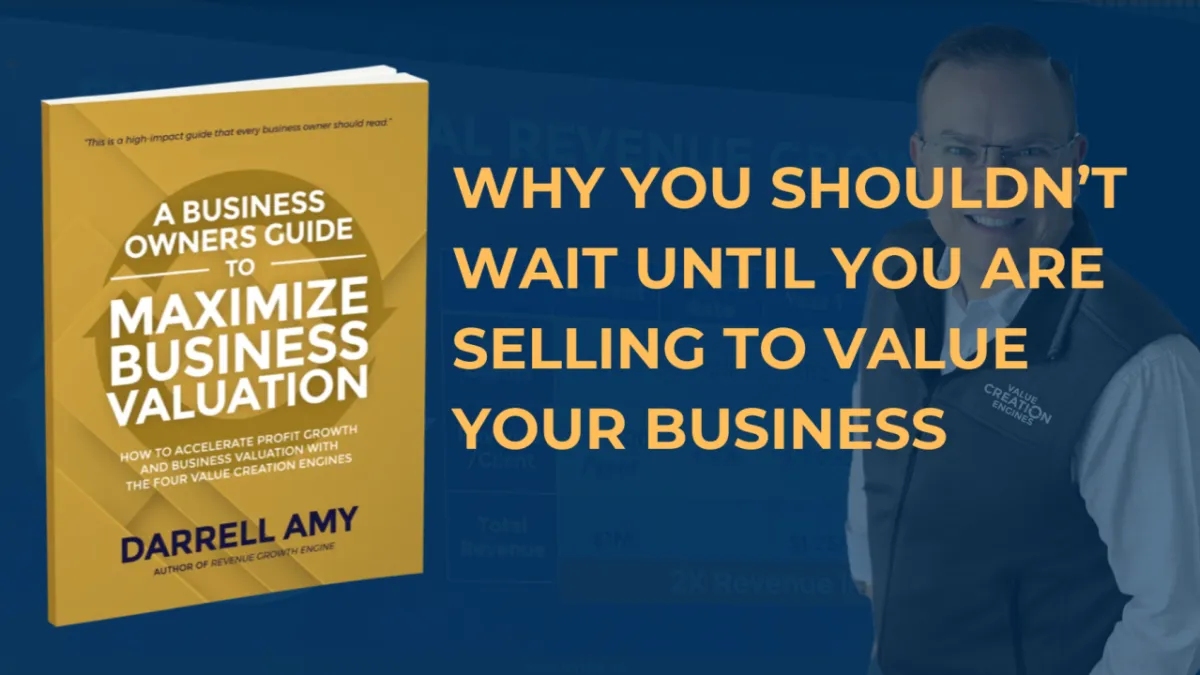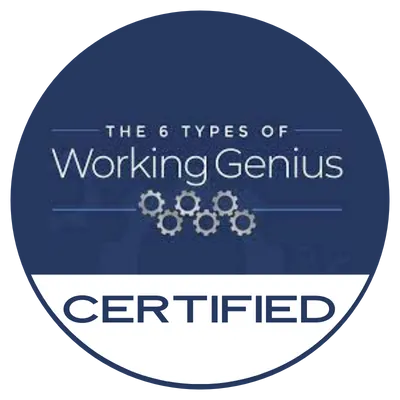
Why You Shouldn’t Wait Until You’re Selling to Value Your Business
One of the most dangerous beliefs a business owner can hold is this: “I’ll deal with valuation when I’m ready to sell.” It seems reasonable—why worry about something in the future?
But if your valuation only becomes a priority when you're ready to exit, you’ve missed the opportunity to build intentional value, reduce risk, and create options for your future.
Valuation isn’t just for selling. It’s the ultimate scorecard for growth.
As Peter Drucker famously said, “What gets measured gets managed.” And what better metric to manage than the value of your business?
Valuation: More Than a Destination—A Dashboard
Think of your business like a high-performance vehicle. You wouldn't drive a race car without a dashboard—and you certainly wouldn’t wait until the last lap to check your speed, fuel, and engine performance.
The same goes for your business. Valuation isn’t a one-time event. It’s a leadership discipline. A way to check how your business is performing—and where to make strategic improvements.
That’s why I encourage business owners to measure their value quarterly, just like they review financials. By establishing a recurring valuation rhythm, you create:
A clear scoreboard for leadership and advisory teams
Visibility into how operational changes are impacting enterprise value
A real-time sense of whether your business is trending in the right direction
Create Your Internal Share Price
Public companies track share price daily. But private business owners? They often have no idea what their business is worth until they bring in a broker—or worse, a buyer.
That’s a mistake. You don’t need to be publicly traded to establish an internal share price—a metric tied to your company’s enterprise value divided by ownership units or phantom shares.
Creating this internal share price gives you:
A clear valuation benchmark that everyone can align around
A way to tie performance and incentives to long-term value creation
A motivational, measurable way to share progress with leadership
It also transforms valuation from something static into something dynamic—something you can influence and grow intentionally over time.
Why Quarterly Valuation Matters
A quarterly valuation rhythm keeps your leadership team focused on what matters most: building a business that increases in worth, not just in size.
Just like your financials include revenue, profit, and cash flow, your scoreboard should include enterprise value and share price. These are the metrics that reflect whether your strategy is working and your business is becoming more transferable, scalable, and resilient.
And here’s the key: when your team knows value is being tracked, they make better decisions. They prioritize process improvement. They invest in leadership development. They think like owners—not just employees.
Make Valuation Part of Your Leadership Rhythm
If you want to grow the value of your business, the first step is simple: start measuring it. Not once at the end—quarterly, as part of your leadership scorecard.
Establish a rhythm. Track your estimated valuation. Create an internal share price. Align your team around the strategic drivers that influence both profit and multiple.
Value isn’t created by accident—it’s built with intention.
Don’t Let Someone Else Reap the Rewards of What You Built
Here’s the tough truth: if you’re not building value, someone else will. Buyers are constantly scanning for under-optimized businesses. When they find one, they pay less—then extract the value you could have captured yourself. Measuring your valuation now ensures you benefit from what you’ve built—not a future owner.
What if you don’t ever plan on selling? If you’re not building value chances are your competitors will. Once again, you won’t reap the full benefits of the company you’ve built.
If you’re going to build a company, why not build it right? The best thing to build is value. You win. Your family wins. Your employees win. Your customers win. Your suppliers win. And best of all, by focusing on value you create a surplus that can empower generosity so everyone wins!
Start Today—Not Someday
If you're serious about growth, freedom, and legacy, start measuring what matters most. Visit: measure.valuecreationengines.com
Because while revenue and profit show what you earned this month, valuation shows what your business is worth—and where it’s headed.
Originally published on Darrell Amy's LinkedIn.
FREE BUSINESS VALUATION
Large Call to Action What is Your Business Worth?
You can Discover the Value of Your Business in Less than 20 Minutes!
Join 70,000 business owners and get your score on the 8 Factors That Drive Your Company’s Value, a comprehensive analysis of your score and a detailed action plan for how to improve your score on each.

DISCOVER HOW YOUR COMPANY CAN UNLEASH STRATEGIC INNOVATION
Attract, engage, and retain top talent
Integrate new technologies like AI
Build competitive advantage
Create profitable growth
"Wow! This is incredibly powerful! My integrator needs to see this right away.
Chris C.
Visionary and CEO


We run our business on EOS
We run our business on EOS



